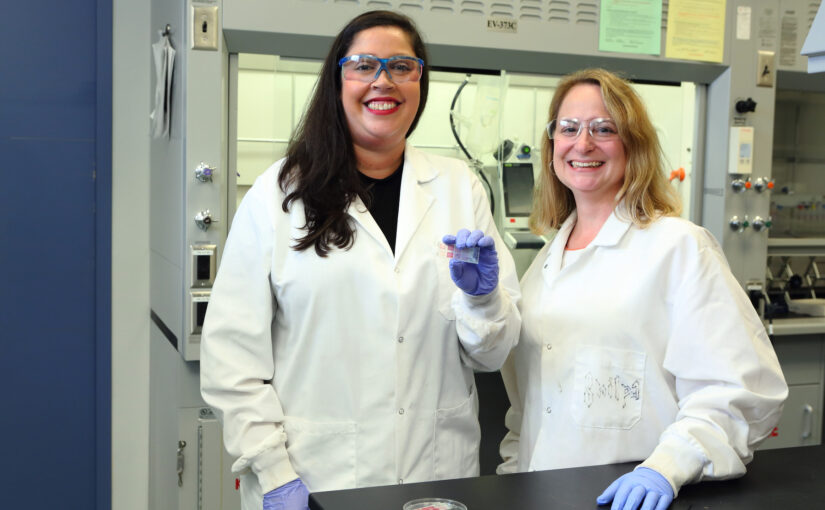Ovarian cancer is particularly difficult to detect, as the disease often does not produce significant symptoms until it has reached late stages and caused metastasis. New screening methods would help physicians detect ovarian tumors early and dramatically increase the chances of patient survival.
A study published in Molecular & Cellular Proteomics by past and current UIC faculty members used a variety of cutting-edge techniques to identify a new biomarker for ovarian cancer that offers hope for effective routine screening — potentially even at home.
While biomarker studies often seek signs of tumor DNA in blood, the research groups of Joanna Burdette, professor of pharmaceutical sciences at the UIC College of Pharmacy, and Laura Sanchez, who moved from UIC to University of California Santa Cruz in 2021, instead looked to the microenvironment near potential tumors.
Researchers collected vaginal samples from mice with ovarian tumors, then used multiple methods such as mass spectrometry — experiments conducted with Stephanie Cologna, UIC associate professor of chemistry — and proteomics technology to find a molecular “fingerprint” of the cancer. The tests identified a potential biomarker in the enzyme cystatin A, which has been previously associated with the body’s immune response to cancer, not the tumor itself.
“I think that’s going to be a very important thing to think about because if we want to detect tumors early, they should be small, maybe even so small that they wouldn’t be detectable if you were just looking for the cancer cell,” said Burdette, who is also a member of the University of Illinois Cancer Center. “But if you look in the environment around the tumor, the immune system, bacteria and other things responding to it, that might be a more robust signal that we could detect earlier.”
The researchers then tested this signal in samples from human patients, using tampons worn by women the day before gynecologic surgery. In samples from patients diagnosed with ovarian cancer, they found that cystatin A levels were twice as high as in the samples diagnosed as benign.
While further trials are needed to verify the predictive power of cystatin A in humans, the paper provides proof of concept that this approach can identify potential biomarkers detectable through routine procedures. Gynecologists could collect vaginal samples during regular checkups or, more speculatively, women could send tampons for laboratory screening on a variety of concerns, similar to new home-screening tests for colon cancer.
“The idea that you could slot this in as part of a routine gynecological exam makes sense to us,” Burdette said. “We can imagine these fingerprints are probably not unique to just cancer, they could also be useful for a variety of women’s health issues, such as vaginal infection, cervical cancer and STDs.”
This article was published by: UIC Today


